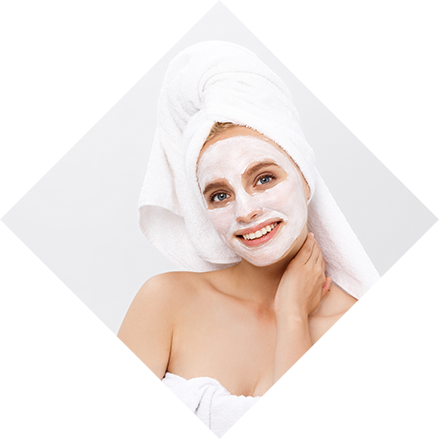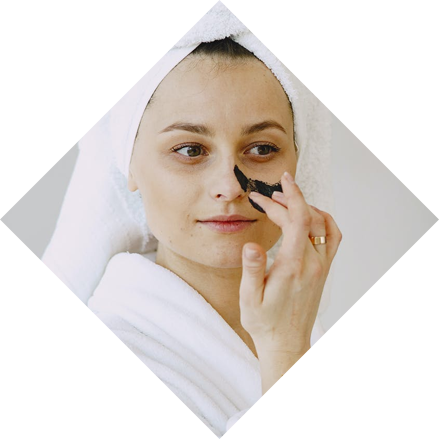Millia
.jpg)
Need An Appointment?
Drop Your Number here
Milia: Causes, Symptoms, and Effective Treatment Options
Milia are tiny, white or yellowish bumps that commonly appear on the skin, especially the face, around the eyes, cheeks, nose, and forehead. These small cysts form when keratin—a protein found in skin, hair, and nails—becomes trapped beneath the skin’s surface. While milia are generally harmless and painless, they can be aesthetically bothersome and may persist for weeks, months, or even years if not treated. Understanding the causes, symptoms, and treatment options is key to effectively managing milia and achieving smooth, healthy skin.
Causes of Milia
Milia occur when keratin is trapped beneath the outer layer of skin, forming small, hard cysts. Several factors can contribute to their development:
-
Primary Milia (Spontaneous):
These appear naturally, often in newborns, due to immature skin. They typically resolve on their own within a few weeks. -
Secondary Milia:
These develop as a result of skin damage caused by burns, blistering, trauma, or long-term use of heavy skincare products that clog pores. -
Skin Care and Cosmetic Products:
Using thick creams, oil-based products, or heavy makeup can block pores, trapping keratin and leading to milia formation. -
Sun Damage:
Excessive sun exposure can thicken the skin and contribute to the development of milia, especially around the eyes and cheeks. -
Medical Conditions and Genetics:
Rarely, milia may be associated with genetic disorders or certain skin conditions such as blistering diseases or conditions affecting the sweat glands.
.jpg)
Types of Milia
Milia can be classified based on their location and underlying cause:
-
Neonatal Milia:
Very common in newborns, these small white bumps appear on the nose, cheeks, and forehead. They usually disappear without treatment within a few weeks. -
Primary Adult Milia:
Occur spontaneously in adults, often around the eyes or cheeks. -
Secondary Milia:
Develop after skin trauma, burns, or use of certain medications. They are more persistent and may require treatment. -
Multiple Milia:
Sometimes milia can appear in clusters, especially after cosmetic procedures, chemical peels, or long-term use of steroid creams.
Need An Appointment?
Drop Your Number here
Symptoms of Milia
Milia are primarily cosmetic in nature and rarely cause discomfort. Common symptoms include:
-
Small, round, white or yellowish bumps on the skin
-
Firm texture and tiny in size, usually 1–2 millimeters in diameter
-
Commonly found on the face, around the eyes, cheeks, nose, and forehead
-
Painless and not associated with itching or redness unless irritated
Treatment Options for Milia
Although milia often resolve on their own, persistent or large lesions may require treatment. Treatment options include:
-
Professional Extraction:
Dermatologists can safely remove milia using a sterile needle or a small incision, followed by gentle extraction of the keratin-filled cyst. This method prevents scarring and recurrence. -
Topical Retinoids:
Retinoid creams promote cell turnover, helping prevent the formation of new milia and gradually reducing existing bumps. -
Chemical Peels:
Mild chemical peels using glycolic acid or salicylic acid exfoliate the skin, unclog pores, and improve skin texture, reducing milia formation. -
Laser Therapy:
For persistent or multiple milia, fractional laser or ablative laser treatments may be used to remove cysts and improve skin appearance. -
Cryotherapy:
Rarely used, cryotherapy involves freezing the milia with liquid nitrogen. It is generally reserved for stubborn cases.
Patient Testimonials

She's the best skin doctor I've come across so far. she listens patiently, gives the prominent treatment accordingly. Guys looking for skin treatment must visit Dr Nidhi Bansal, you will get satisfying results👍
- Sanya Sayyed

I consulted with Dr Nidhi Bansal after one of my friend suggested. The doctor is very
calm and well versed with the solutions. I definitely liked the way He made me
understand the issues of my hair sclap.
I am very happy with my own experience with
her and the treatment provided amazing hence I would highly recommend to this doctor for
any skin or hair disease.
- Anu Verma

I was suffering from severe acne on my face. Dr Nidhi told me in detail about the treatment options and customized the procedures for my face. Within one day my redness and acne has reduced by 90%. I am so happy with the results and would recommend Dr Nidhi to everyone for their skin and hair problems.
Priya Rajput

Best doctor I always go to Dr Nidhi skin clinic whenever i have any skin problems . Dr. Nidhi is such a humble + trusted doctor I was dealing with pimples and scars from 6 years, someone told me about Dr Nidhi .I having been taking treatment from 2 months .my acne has gone for forever ,thanks for giving me normal skin best dermatologist in jaipur I got 100 % results , M bhut jayda preshan tha acne , blackheads whiteheads se ,mera face bhut khrab dikhta tha bhut guilty feel hota tha logo ko face krne m now I m confident .thank you doctor
Neeraj Yogi



Patient's Testimonials









